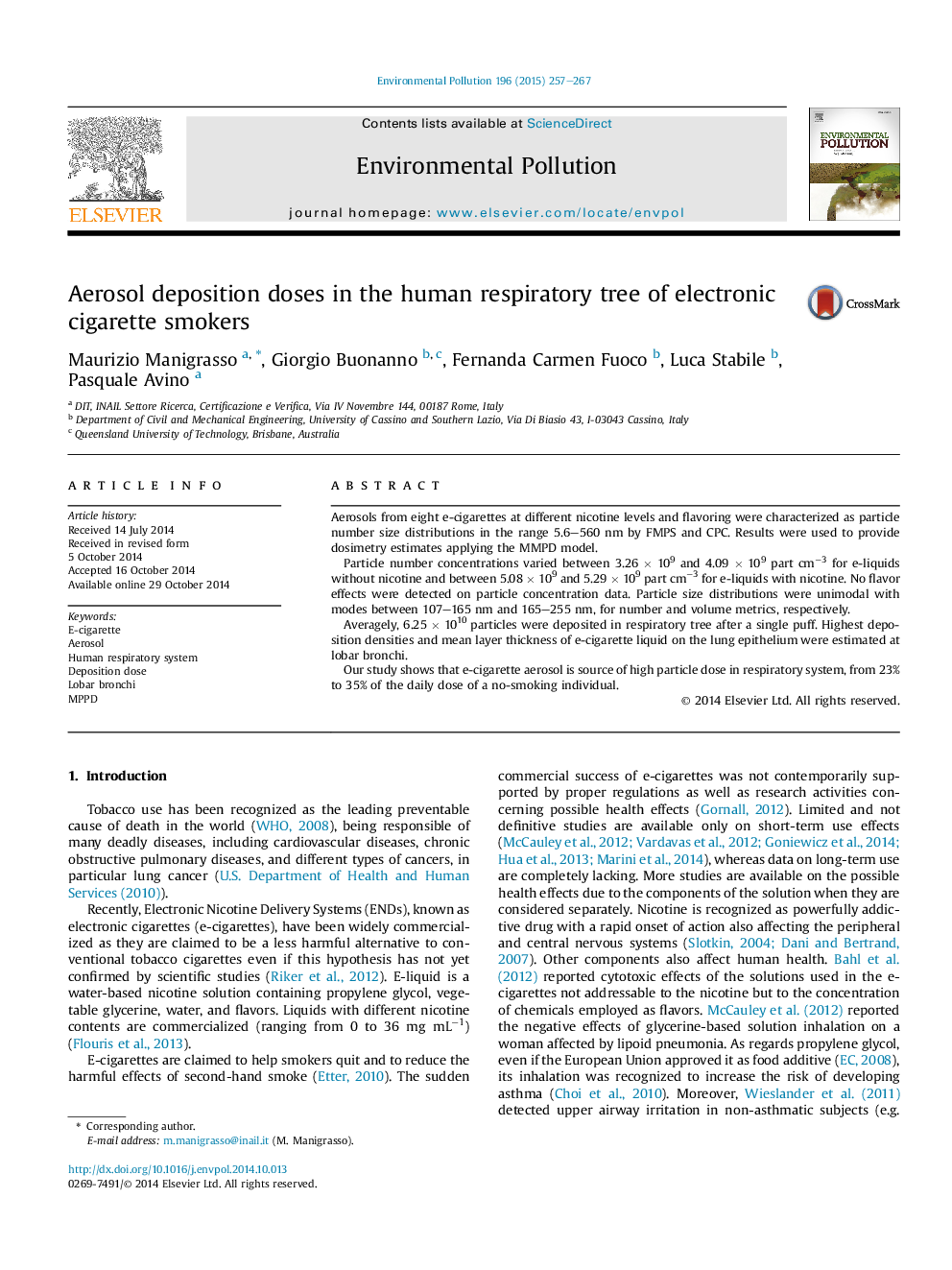| Article ID | Journal | Published Year | Pages | File Type |
|---|---|---|---|---|
| 6317928 | Environmental Pollution | 2015 | 11 Pages |
â¢Size-segregated and airway resolved deposition doses were estimated.â¢2-s puff total dose was 23-35% of the daily dose of a not smoking individual.â¢Presence of nicotine increased deposited doses of about 40%.â¢Maximum deposition densities per airway generation occurred at lobar bronchi.â¢At lobar bronchi e-cig mean layer thickness is 16-30% of pulmonary surfactant layer.
Aerosols from eight e-cigarettes at different nicotine levels and flavoring were characterized as particle number size distributions in the range 5.6-560 nm by FMPS and CPC. Results were used to provide dosimetry estimates applying the MMPD model.Particle number concentrations varied between 3.26 Ã 109 and 4.09 Ã 109 part cmâ3 for e-liquids without nicotine and between 5.08 Ã 109 and 5.29 Ã 109 part cmâ3 for e-liquids with nicotine. No flavor effects were detected on particle concentration data. Particle size distributions were unimodal with modes between 107-165 nm and 165-255 nm, for number and volume metrics, respectively.Averagely, 6.25 Ã 1010 particles were deposited in respiratory tree after a single puff. Highest deposition densities and mean layer thickness of e-cigarette liquid on the lung epithelium were estimated at lobar bronchi.Our study shows that e-cigarette aerosol is source of high particle dose in respiratory system, from 23% to 35% of the daily dose of a no-smoking individual.
Graphical abstractDownload full-size image
